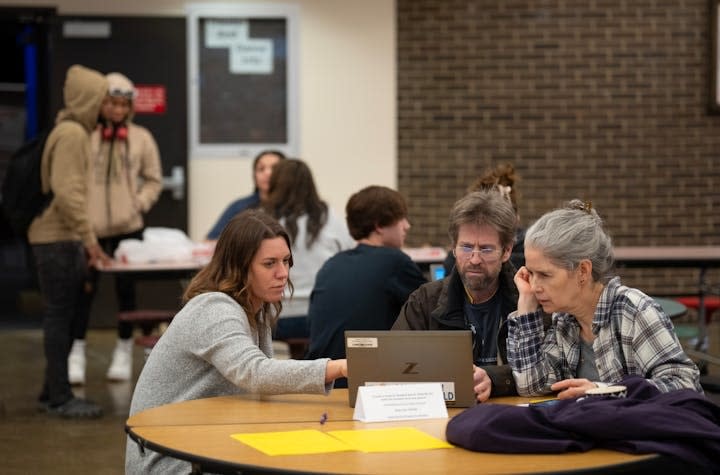State offers help to students struggling with FAFSA forms

- Oops!Something went wrong.Please try again later.
- Oops!Something went wrong.Please try again later.
The data is finally flowing, and award letters are being sent, but state leaders and higher education advocates gathered at the State Capitol Monday with a "message of urgency" for Minnesota students: Fill out your college financial aid forms.
"The time is right now," said Dennis Olson, commissioner of the Office of Higher Education.
He joined Lt. Gov. Peggy Flanagan and higher education advocates at a news conference Monday during which he announced $15,000 grants for two groups — College Possible Minnesota and Achieve Twin Cities — that plan to continue working through the summer with students who have struggled trying to complete the new Free Application for Federal Student Aid (FAFSA) form.
The good news, Olson said, is issues that brought about delays in the release of data to his office and to financial aid directors at campuses across the state appear to have been resolved.
Still, Flanagan acknowledged some college aspirants may have been discouraged in their attempts to navigate the system in recent months.
"We urge all Minnesotans to try again," she said.
Monday's announcement came a month after the leaders of eight groups promoting college access warned of a "catastrophic decline in college enrollment" if Gov. Tim Walz did not provide more resources to assist students in determining how much they have to pay for college.
State officials say students have access to $2.5 billion in financial aid through federal, state and private sources, but 16% fewer high schoolers have completed the FAFSA compared with a year ago.
The U.S. Department of Education attempted this year to streamline the FAFSA and update its formulas, but the rollout got bogged down by delays and tech glitches, leaving students uncertain about how much aid they can count on for the coming year.
Some colleges responded by pushing back their traditional May 1 decision deadlines.
In a typical year, more than 225,000 Minnesotans fill out the FAFSA, which benefits college officials, too, in efforts to predict the size of next year's freshmen classes.
College Possible Minnesota and Achieve Twin Cities were among the groups to sign on to a letter last month urging Walz to use $500,000 of its $3.7 billion surplus to boost efforts to help students complete the forms. They acknowledged, however, that the request came late in this year's legislative session.
Olson said his office is nearing the end of its fiscal year and was able to come up with the $30,000 in grants from within its own budget.
Achieve Twin Cities has coordinators who work directly with students in the Minneapolis and St. Paul school districts. College Possible Minnesota works with kids statewide and provides one-on-one assistance as well as hotline opportunities and webinars for students and families encountering issues with the FAFSA.

